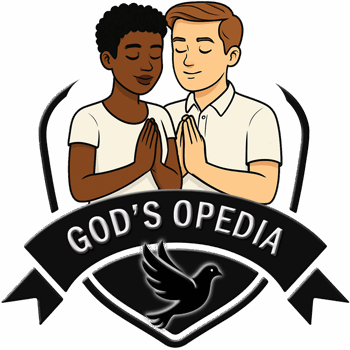The Bible: God’s Word

How the Scriptures Were Written, Preserved, and Studied Through the Ages
Christians believe the Bible is the inspired Word of God, given to reveal His character, His plan for salvation, and His will for our lives. While it is a collection of 66 books written by more than 40 human authors over roughly 1,500 years, it tells one unified story: the redemption of humanity through Jesus Christ.
In this overview, we’ll look at how the Bible came to us, the differences between the Old and New Testaments, approaches to studying it, and how to choose a translation that will help you grow in your faith.
1. How the Bible Was Written, Compiled, and Preserved
Inspiration
Christians affirm that the Bible was written by human authors under the supernatural guidance of the Holy Spirit. As 2 Timothy 3:16–17 says:
“All Scripture is breathed out by God and profitable for teaching, for reproof, for correction, and for training in righteousness, that the man of God may be complete, equipped for every good work.”
This doesn’t mean the authors were passive scribes, but that God worked through their personalities, contexts, and vocabularies to convey His truth without error in the original manuscripts.
The Old Testament
Written primarily in Hebrew (with some Aramaic).
Contains 39 books in the Protestant canon.
Includes the Law (Torah), the Prophets (Nevi’im), and the Writings (Ketuvim).
Preserved meticulously by scribes such as the Masoretes.
The New Testament
Written in Koine Greek.
Contains 27 books: Gospels, Acts, Epistles, and Revelation.
Circulated among early Christian communities within decades of Jesus’ death and resurrection.
Recognized as authoritative because they were written by apostles or close associates of apostles.
Canon Formation
The “canon” refers to the official list of books recognized as inspired Scripture.
Old Testament canon was affirmed in Jewish tradition well before Jesus’ time.
New Testament canon took shape through usage in worship, apostolic authorship, and consistency with recognized truth.
By the late 4th century, the 27-book NT we have today was firmly established.
Preservation
Despite persecution, attempts at destruction, and centuries of copying by hand, the Bible’s text has been preserved with extraordinary accuracy.
Dead Sea Scrolls (discovered 1947) confirmed remarkable consistency with much later manuscripts.
Thousands of NT manuscripts, some dating within a century of the originals, make the NT the best-attested ancient document in history.
2. Differences Between Old and New Testaments
Old Testament Overview
Focus: God’s covenant with Israel, His law, promises, and preparation for the coming Messiah.
Themes: Creation, fall, redemption promised; God’s holiness, justice, and steadfast love.
Structure: Law (Genesis–Deuteronomy), History (Joshua–Esther), Poetry/Wisdom (Job–Song of Solomon), Prophets (Isaiah–Malachi).
New Testament Overview
Focus: Fulfillment of God’s promises in Jesus Christ, the establishment of the Church, and the hope of His return.
Themes: Grace, faith, salvation, mission, endurance.
Structure:
Gospels (Matthew–John): Life, death, and resurrection of Jesus.
Acts: Birth and growth of the early Church.
Epistles (Romans–Jude): Instruction, correction, encouragement.
Revelation: Apocalyptic vision of Christ’s final victory.
Continuity and Fulfillment
While the Testaments differ in language, covenant, and historical setting, they are deeply connected:
The OT points forward to Christ; the NT reveals Him.
Jesus affirmed the authority of the OT (Matthew 5:17–18) and fulfilled its promises.
Together, they present God’s unchanging plan of salvation.
3. Bible Study Methods
Inductive Study
A method that moves from observation → interpretation → application:
Observation: What does the passage say?
Interpretation: What does it mean?
Application: How should it change my life?
Topical Study
Examining what the whole Bible says about a particular subject (e.g., forgiveness, prayer, the Holy Spirit).
Verse-by-Verse (Expository) Study
Working through a passage one verse at a time, paying attention to grammar, context, and background. This is the primary preaching method in many Bible-teaching churches.
Devotional Reading
Less technical, more reflective — reading with the aim of hearing God’s voice and responding in prayer.
Tools That Help
Study Bibles (with maps, notes, timelines)
Bible dictionaries and encyclopedias
Concordances and cross-reference systems
Original language tools (for deeper study)
4. Recommended Translations and Study Tools
Translation Philosophies
Formal Equivalence (“word-for-word”)
Examples: ESV, NASB, KJV.
Stays close to original wording and structure; great for in-depth study.
Dynamic Equivalence (“thought-for-thought”)
Examples: NIV, CSB.
Balances readability with accuracy; good for both study and public reading.
Paraphrase (restating in contemporary language)
Examples: The Message, NLT.
Useful for fresh perspective; not ideal for primary study.
Choosing a Translation
Use at least one formal and one dynamic translation for comparison.
If new to Bible reading, start with something highly readable (e.g., NIV, CSB) and compare with a more literal version.
Study Resources
ESV Study Bible or NIV Study Bible for comprehensive notes.
Bible Project videos for visual overviews.
Blue Letter Bible (free online) for cross-references and original language tools.
5. Why the Bible Matters Today
God Speaks Through It
The Bible isn’t just a record of ancient history; it is living and active (Hebrews 4:12). Through it, God comforts, convicts, instructs, and transforms.
It Shapes Christian Life and Thought
From personal morality to public policy, the Bible informs how Christians understand right, wrong, purpose, and destiny.
It Unites the Church
Despite denominational differences, Christians agree that Scripture is the ultimate authority for faith and practice.
It Brings Hope
Its promises anchor believers in times of suffering and uncertainty, reminding us that God’s purposes stand firm.
6. Getting Started: Practical Steps
Pick a Translation you can read easily.
Start with the Gospels (Mark or John are often recommended).
Set a Time and Place — consistency matters more than length.
Pray Before and After Reading — ask God to open your understanding and help you live what you learn.
Use a Reading Plan — many plans cover the Bible in a year, but you can also focus on themes or books.
Join a Bible Study Group — community brings accountability and richer insights.
Next Steps:
Explore The Life of Jesus Christ to see the central figure the Bible points to.
Visit Christian Living & Discipleship for practical ways to apply what you read.
Check out our recommended Study Tools & Resources section for links and guides.












